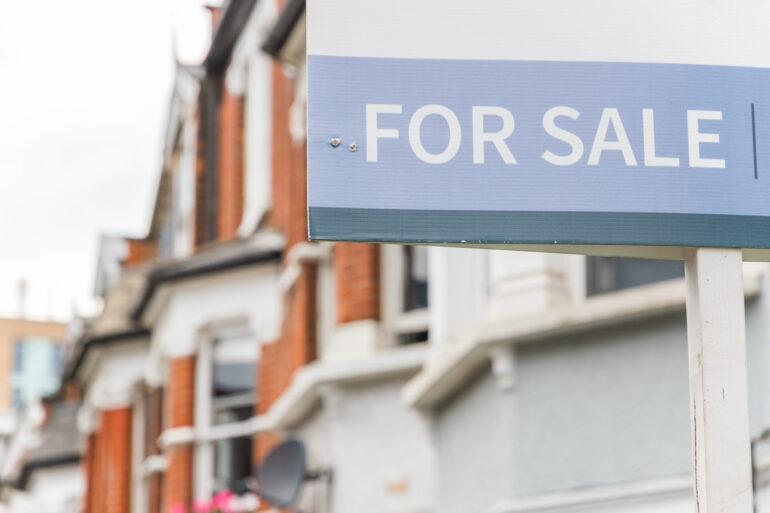The UK property market remains resilient, with transactions and rental activity continuing to rise despite longer completion times, according to the latest TwentyCi Property & Homemover Report Q3 2025.
More than 1.4 million properties have been listed for sale in 2025 – up 3.7% year-on-year – while more than one million have reached sale agreed, an increase of 5.1% on 2024.
HMRC recorded 780,000 residential transactions so far this year, marking a 12.8% rise on 2024 and 2.9% above pre-pandemic 2019 levels.
However, the average time to reach ‘sale agreed’ was found to be 77 days, the longest in five years and 8.2% higher than in 2024.
The average time to exchange contracts has also risen to 123 days, up 1.7%.
Colin Bradshaw, chief executive of TwentyCi, said: “With 82,000 sales falling through in Q3 alone, we’re fully behind the Government’s push to shake up the homebuying process.
“Waiting four months just to exchange contracts is far too long.
“A bit more upfront info at the start could really help smooth things out.
“If the Autumn Budget plays ball, we’re on track to hit 1.15 million completed transactions in 2025.”
Demand grew across most regions, with Wales recording the highest year-on-year increase at 8.6%, followed by the East Midlands and North West at over 8%.
Inner London and Northern Ireland were the only regions to see falls, down 1.6% and 2.9% respectively.
At city level, Cardiff led with sales agreed up 6.4%, followed by Nottingham (6.2%) and Plymouth (5.9%). Inner London saw a 3.8% decline.
The average asking price stood at £441,000 in Q3.
Annual price growth remains steady at 2.8%, with a 0.3% monthly increase in July. Analysts forecast house prices to rise by around 2.5% for the year, supported by high employment, 5% deposit products, and wider availability of 4.5-times income mortgages.
Price reductions have reached record levels. So far in 2025, there have been 919,000 price cut events – 16% more than last year – with 38.7% of listings experiencing at least one reduction.
The trend was most evident in London and the South, while the North has seen slight improvements.
Rental stock was up 6.9% on 2024, with more than one million homes listed to let this year.
Supply remained below 2019 levels by 159,000 properties but has increased across every UK region.
Outer London saw the largest growth in availability at 17.8%, compared with 1.4% in Inner London.
Lettings agreed rose 5.6% year-on-year – the highest in six years – with Outer London demand up 14.1%.
The average rent stood at £1,477 per month, down just 1% (£15) on last year.
Leeds led city rental growth with lettings up 24.4%, followed by Bristol (17.7%) and Peterborough (14.8%). Inner London rents grew by just 0.6%, while Northern Ireland saw a 2.1% fall.
Online and hybrid agents accounted for 5.2% of all property exchanges in Q3, down slightly from 2024’s 5.3%.
Self-employed agents grew their share by 29% to 2.2% of the total, led by eXp UK (1.33%) and William H Brown (1.32%).
In the rental market, online agents now manage 17.9% of new instructions, a 6.3% annual increase.
OpenRent dominates the sector with 16.7% share, growing 7.7% year-on-year.
Following last year’s inheritance tax announcements, property listings by retirees have risen 16% since Q4 2024, while completed sales are up 26%.
Pensioners with larger, higher-value properties have been most active, with bungalows 470% more likely to be listed and 600% more likely to sell than other property types.
The majority of these transactions are concentrated in the South West (41% more likely), South East (30%) and East of England (22%).
Off-market transactions – properties sold without public advertising – have dropped sharply, from 17.8% of total sales in 2022 to 11.4% in 2024.
The fall was attributed to greater competition and the need for more visible marketing exposure.
Affordable rental stock (£0 to £800pcm) declined 2.5% year-on-year, while mid-range rentals (£800 to £1,500pcm) rose 11.8%.
Despite rising supply, affordability remains a challenge in major cities, where rents continue to outpace wage growth.
TwentyCi said it expects 1.15 million transactions in 2025 and a similar level in 2026, with growing momentum in homemover activity.
More than 1.6 million households are currently progressing through the buying or selling process – up 100,000 on 2024 – signalling a steady, if cautious, market recovery.
Alex Bannister, independent board adviser, said: “Commentary on affordability inevitably focuses on the difficulties faced by those on average incomes.
“But this perspective is less relevant for the future path of house prices, where it’s the number of prospective home buyers that exerts pressure on prices, and that number doesn’t need to be huge.
“The number of transactions has been relatively low at c1.1m per annum over the last few years (with over 25% by cash buyers who are unconstrained by mortgage affordability).
“Also, existing homeowners (who represent c60% of buyers) have large dollops of equity, which buffer them against unaffordability.
“There are c9m households that earn upwards of £50k per annum and with a mortgage of 4.5 times income (assuming they have the deposit), they can afford to buy property in most of the UK.
“Only the top decile of earners (c3million) can indeed afford London prices, but with London accounting for c90,000 of the c1.1m UK sales per year, there is enough demand to underpin current house prices.”
Bannister added: “The post-stamp duty slowdown appears to be over as activity (mortgage approvals) picked up over the summer.
“However, the hangover from the spike in demand at the start of the year has led to a softening in house prices.
“There is also noise about the forthcoming budget and possible increases in property taxes (e.g., a seller’s tax on properties over £500,000, that National Insurance could be added to landlords’ incomes and the replacement of council tax with a property wealth tax.)
“With interest rates held up by stubbornly high retail price inflation, the market is in a ‘watch and wait’ phase.”



